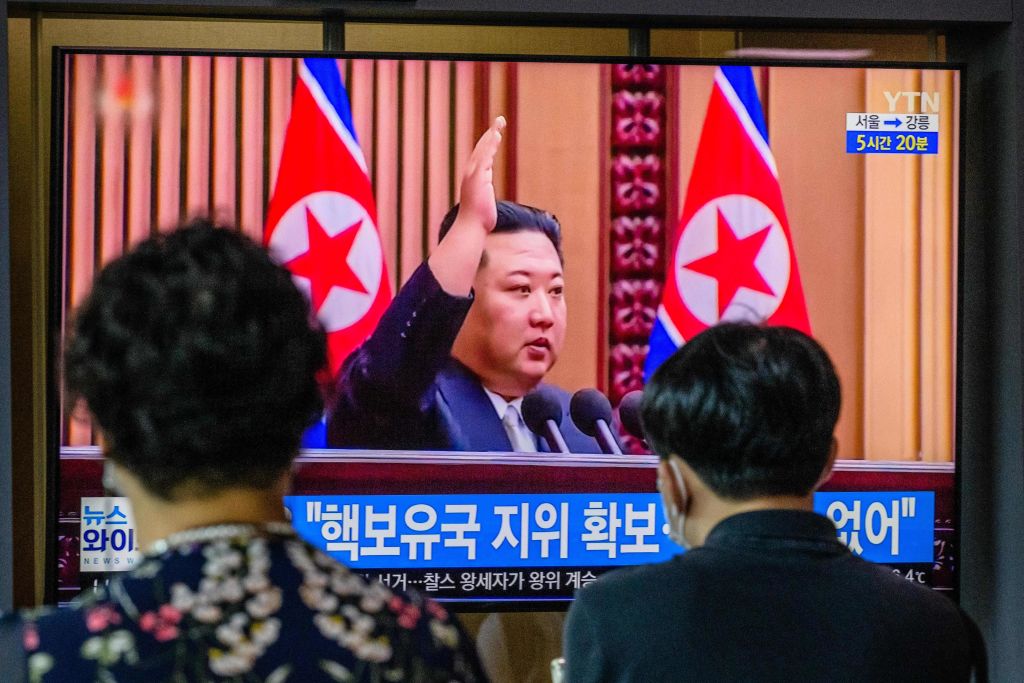While some people start the day with a bowl of cereal, North Korea chose to greet Thursday with the launch of a ballistic missile. The missile, believed to have intercontinental capabilities, failed mid-flight, but it was nonetheless significant. North Korea fired it on the second consecutive day of weapons testing held by the country this week: on those two days it launched more missiles than it had done in the entirety of 2017, with over 23 missiles and over 100 artillery shells on Wednesday alone.
North Korea’s missile test caused international havoc. South Korean news broadcasts were interrupted by air raid sirens urging the population to seek shelter; Japan issued evacuation alerts to residents on Honshū, the country’s largest island. Whilst it was initially thought that Thursday’s missile had flown over Japanese territory, as has become commonplace, Japan’s defence minister later confirmed this had not happened. The missile had, in fact, landed in the East Sea. Nevertheless, this test shows North Korea’s technology is improving: South Korea’s military calculated that this ballistic missile reached an altitude of nearly 2,000 kilometres, flying for approximately 750 kilometres, before falling into the East Sea.
This latest North Korean missile-testing spree is likely in response to the ongoing US and South Korean ‘Vigilant Storm’military exercises. While North Korea was busy projecting missiles, American and South Korean air forces were holding interception drills to ‘strike and neutralise’ air-borne targets. Earlier in the week, the North Korean Foreign Ministry warned that the US would pay an ‘equal price’ for conducting these exercises. On Thursday, Washington and Seoul agreed to extend their activities, a decision lambasted by senior North Korean military official, Pak Jong-chon, as a ‘very dangerous and false choice’.
Kim Jong Un wants to demonstrate that North Korea a nuclear state, even if it is not recognised as such
North Korea decries any US-South Korean military exercises as part of what it calls the US ‘hostile policy’. This ‘policy’, concocted by the North Korean regime itself, is underpinned by the claim that the US ultimately seeks to overthrow the Pyongyang regime. Since the unresolved end of the Korean War in 1953, Pyongyang has used it as a convenient excuse to justify its military or nuclear agitations, whether that be short-range ballistic missile launches, denunciations of US and South Korean actions, or even nuclear tests.
In 2017, North Korea surprised the international community by launching three ballistic missiles with the potential to strike the US mainland. The first test, symbolically, took place on 4 July, US Independence Day. Later that same year on 3 September, North Korea conducted its sixth, and most recent, nuclear test: it was also its largest to date. Despite the questionable accuracy of Pyongyang’s claims at the time that it had tested a Hydrogen bomb, then-US Defence Secretary James Mattis infamously warned of a ‘massive military response’ if any North Korean attack ensued.
Nonetheless, 2022 is neither 1953 nor 2017. North Korea demonstrated an increase in the quality and quantity of its missile and nuclear capabilities this year. The regime has also learnt how to take advantage of any crisis, whether global or closer to home. With South Korea mourning the tragic loss of life following the fatal crush of Halloween revellers in Itaewon, North Korea knows that the Yoon government will be preoccupied with domestic affairs. Even if the UN Security Council, due to meet today, issues a strongly-worded condemnation of North Korea’s missile testing, Pyongyang is aware that, given Russia and China’s veto power, the Council is largely powerless to rein in its nuclear ambitions.
As North Korea’s nuclear aims continue to strengthen, its long-suffering neighbour Japan, increasingly riled up by missiles landing in their waters, may take action of its own. Tokyo is already taking steps to bolster its defences. For the past week, it has been in negotiations with the US to purchase US-manufactured Tomahawk cruise missiles, widely seen as a response to recent Chinese military activity in its vicinity. North Korea’s recent wave of missile launches will no doubt increase the clamour of voices in Japan calling for the country to strengthen its defence capabilities.
Whatever Washington or Seoul says, though, Pyongyang looks to be undeterred. Although the defence ministers of US and South Korea have agreed to find new ways of bolstering the alliance’s defence capabilities around the peninsula, the presence of US tactical nuclear weapons – as was the case from 1958 to 1991 – has been ruled out. The recently-released US National Defence Strategy highlighted how ‘any nuclear attack by North Korea against the United States or its Allies and partners is unacceptable and will result in the end of that regime’. Nonetheless, with the Biden administration focused on Ukraine, and admitting that North Korea is ‘not a rival on the same scale as [China] and Russia’, Pyongyang looks set to take advantage of the situation and prepare for a seventh nuclear test. Such an occurrence would hardly be unsurprising given recent events, and would make a mockery of the attempts by great powers to curb North Korea’s nuclear ambitions.
Certainly, launching a barrage of missiles is one way of attracting the US’s attention. Yet, for Kim Jong Un, attracting attention is not enough. The leader of the hermit kingdom wants to demonstrate to the world that North Korea is a nuclear state, even if it is not recognised as such by the international community. Not only that, but it wants to show that this state can wage a nuclear war if it so chooses. At the turn of the century, when the North’s nuclear ambitions were more ambition than reality, Pyongyang referred to its nuclear capabilities as its ‘treasured sword’, a phrase it continues to use to this day. Now, the sword is getting sharper, and nobody can take it away from Kim.






Comments